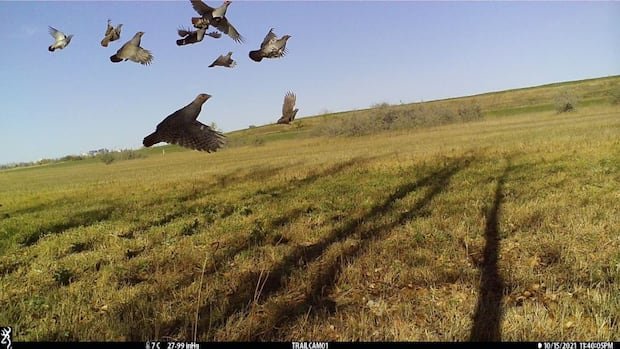Researchers from the Royal Saskatchewan Museum have conducted a comprehensive survey of numerous wildlife species in the Regina region as part of an urban wildlife initiative. Utilizing 28 monitoring stations positioned throughout the city since autumn 2021, researchers have gathered visual images and audio recordings of 143 bird species and 15 mammal species. Notably, common species observed include Canada geese and white-tailed jackrabbits, while the American mink emerged as the least common species documented in the study.
Ryan Fisher, the curator of vertebrate zoology at the museum, highlighted the project’s objective of evaluating the impact of urbanization on wildlife. Fisher noted that the city’s abundance of green spaces has seemingly mitigated adverse effects on wildlife populations. Various species were identified in suburban regions, which feature a blend of natural environments and human-made structures, with a particular emphasis on the presence of numerous bird species. Additionally, sightings of moose on the city outskirts were reported.
In a parallel study related to urban wildlife, Katie Harris, a PhD candidate in animal and poultry science at the University of Saskatchewan, recorded an increase in moose sightings within Saskatoon over a three-year period. The study reported 60 moose sightings within the city limits between September 2020 and September 2023, signifying a notable rise from eight moose in the initial year to 29 in the final year. Harris pointed out a specific incident in 2021 involving a moose crashing through a school window as indicative of the growing interaction between humans and urban wildlife.
Moreover, recent research co-authored by Alex Filazzola, a data scientist and biology instructor at Western University, suggests that Canadian cities could witness a surge in animal species by 2100 due to climate change. While no specific data is available for Saskatchewan, the study projects an influx of over 150 new species in Winnipeg under a low-emission scenario. Filazzola highlighted the potential for warmer urban environments on the Prairies to attract cold-sensitive animals, possibly leading to an increase in species diversity within cities.
Jordan Rustad, a researcher involved in the Royal Saskatchewan Museum’s project, emphasized the research’s aim to explore urban planning strategies that promote coexistence between wildlife and humans. Rustad, also a member of the Bird Friendly Regina committee, noted the prevalence of free-roaming cats in Wascana Park, posing a significant threat to birds. Encouraging responsible pet ownership, such as keeping cats indoors or supervising their outdoor activities, can help mitigate such risks.
The importance of green spaces in sustaining urban wildlife populations was underscored by U of Saskatchewan’s Harris. She emphasized the need for diverse vegetation in these spaces, advocating for the enhancement and preservation of green areas to support wildlife. Implementation of wildlife-friendly fencing and the use of low-light pollution lighting were suggested as measures to protect and enhance habitats for birds and bats thriving in darker environments.


